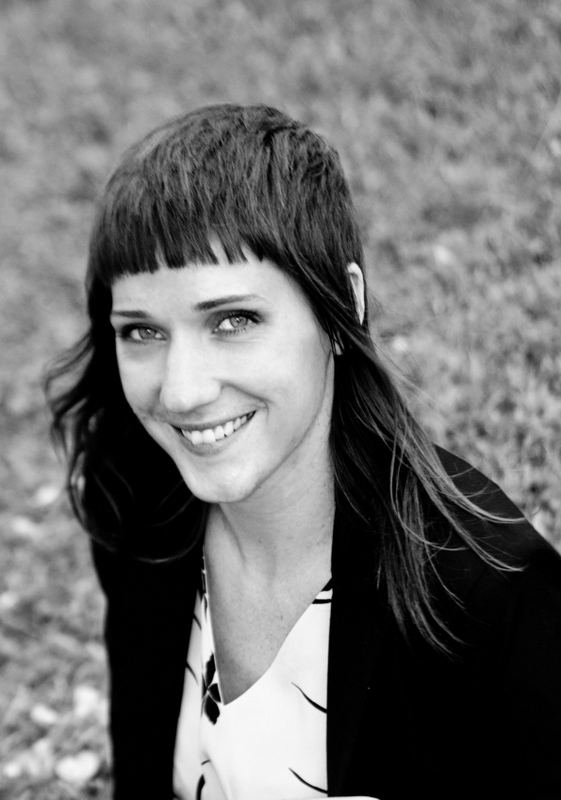
Imagine a funeral home that also served as an art gallery. At a service you might watch the deceased’s favorite movie, or listen to a concert by their favorite local band.
Sarah Wambold wants to build that funeral home in Austin, Texas, if she can only jump through the hoops of one of the country’s most conservative states in one of the country’s most conservative industries. Digital Dying recently spoke to Sarah about her art gallery funeral home, which she plans to call Continuum.
Austin seems like a hip green city with an alternative everything, there’s no alternative funeral home?
I went to mortuary school in Milwaukee which was super traditional and was totally expecting to come here and find one funeral home that was very much the Austin mentality, but it truly doesn’t exist. I want Austin to have the funeral home it deserves; creative, environmentally friendly and locally owned. The ideas are there but nobody is putting them into practice, probably because you have to be totally insane. Many funeral homes are funded by big corporations, they don’t have to get out there and pitch their funeral home idea.
Other Great Reads: The complete guide to planning your own funeral
What will a funeral at your funeral home look like?
Maybe we’ll have a record listening party, or screen the deceased’s favorite film or have readings from their favorite book. We’ll put stuff on they found meaningful when they were alive for everyone to see one more time, surrounded by pictures of them and their friends. All of that could happen now but people are not comfortable doing that in a traditional funeral home space. My understanding is people don’t like to talk about death when it’s right on top of them. They will talk about death when it’s a safe distance away, when it’s a funny story on the internet or in a movie. That’s where the conversations are happening and that’s what’s going to be happening in my funeral home. And that’s going to push the whole industry forward. I think Continuum will also become an art space that tells the story behind building the funeral home.
Other Great Reads: Serial killer art and homemade guillotines – interview with the world’s most provocative museum owners
Why don’t people see value in funeral homes anymore?
People don’t see value in the funeral home anymore because they don’t see that as a place where they want to spend money. They figure they’ll just let the funeral home bury the body or cremate it or whatever and they’ll go to the bar or the house and have a ceremony. But the reality is it’s hard to plan that on top of everything else you are doing. People who don’t have a lot of money will often spend the most money on funerals, and the ones who have the most money are the ones who will have already preplanned a funeral with a cremation. The rich want to be philanthropists, they don’t want money to go into this ornate service, they want it to go back to their kids or to a fund, because they see value in philanthropy. Whereas people without a lot of money see funerals as the one chance to give a person’s life value. I think everyone can learn to value funerals again, I really do. I am so excited when someone has a good funeral experience, because they’re important.
“People don’t see value in the funeral home anymore because they don’t see that as a place where they want to spend money”
Why did you leave your funeral home job in Austin?
I’m thankful for the traditional background I came from because you have to know the rules to go outside them. But continuously being reinforced was that there was so much potential and no one was taking advantage of it. I left because I wasn’t getting paid well and I wasn’t getting benefits. I also never felt comfortable in that funeral home space. The worst part of my day was walking into that space. How could I expect a family to feel comfortable when I didn’t even feel comfortable? So about four or five years ago I left and promised myself that I wouldn’t get back into the industry unless I could do it in a way I really loved. This has been my pathway back.
What’s the status of your funeral home quest?
The state of Texas makes it very difficult to move forward, getting a funeral home license requires access to vehicles to carry a body, two full-size display caskets, a place where people can gather for a service and a prep room for embalming, even though embalming isn’t required. There’s going to be lots of exploration of commercial space in the next few months. There’s going to be meeting with wood workers to get the caskets I need, because I am not thrilled with the merchandise I have seen. And then there is going to be me refining my pitch and hopefully finding an investor. I am very skeptical about where the money comes from, because I don’t want to be at the mercy of someone else’s bank account. People suggest I make the funeral home a nonprofit but I can’t see this business working with a board because it’s so personal, and there are so many non-profits in Austin. I’m bored of that model, I’m ready to be a capitalist. That’s another misconception about what I’m trying to do. I’m not afraid at all to charge people and get paid. And I don’t think people are afraid to spend money if they see the value in it.
Does that mean you will sell merchandise at your funeral home?
I will definitely be selling merchandise at my funeral home, but we will have a pretty select stock. A lot of what the industry has to offer in response to people’s demand for personalization is just more gimmicky things that people can buy. My products will definitely be biodegradable and definitely be artisan made. I want them to have a story, I want them to be locally made. I totally realize that I am completely whittling down my market but like I said before I am okay with that, I am being idealistic and I don’t really care. Sometimes being idealistic can really pay off. Look at Whole Foods, that started in Austin in a one room shack. Now it’s huge.









